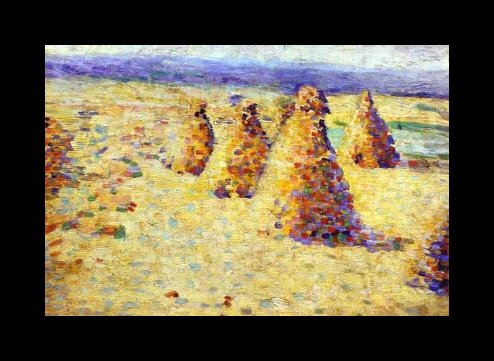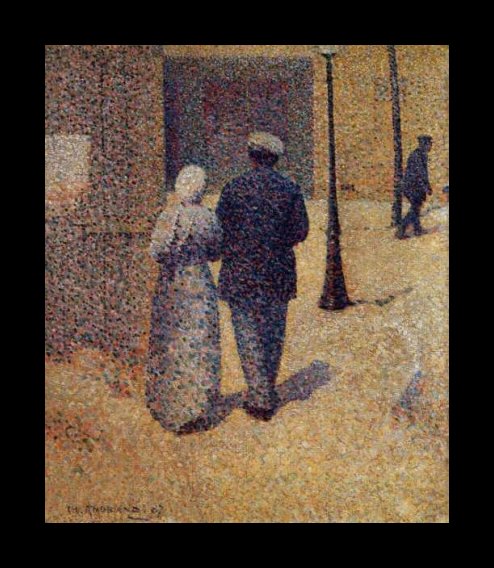Charles Angrand (1856- 1926)
Get a Charles Angrand (1856- 1926) Certificate of Authenticity for your painting (COA) for your Charles Angrand (1856- 1926) drawing.
For all your Charles Angrand (1856- 1926) artworks you need a Certificate of Authenticity (COA) in order to sell, to insure or to donate for a tax deduction.
Getting a Charles Angrand (1856- 1926) Certificate of Authenticity (COA) is easy. Just send us photos and dimensions and tell us what you know about the origin or history of your Charles Angrand (1856- 1926) painting or drawing.
If you want to sell your Charles Angrand (1856- 1926) painting or drawing use our selling services. We offer Charles Angrand (1856- 1926) selling help, selling advice, private treaty sales and full brokerage.
We have been authenticating Charles Angrand (1856- 1926) and issuing certificates of authenticity since 2002. We are recognized Charles Angrand (1856- 1926) experts and Charles Angrand (1856- 1926) certified appraisers. We issue COAs and appraisals for all Charles Angrand (1856- 1926) artworks.
Our Charles Angrand (1856- 1926) paintings and drawings authentications are accepted and respected worldwide.
Each COA is backed by in-depth research and analysis authentication reports.
The Charles Angrand (1856- 1926) certificates of authenticity we issue are based on solid, reliable and fully referenced art investigations, authentication research, analytical work and forensic studies.
We are available to examine your Charles Angrand (1856- 1926) painting or drawing anywhere in the world.
You will generally receive your certificates of authenticity and authentication report within two weeks. Some complicated cases with difficult to research Charles Angrand (1856- 1926) paintings or drawings take longer.
Our clients include Charles Angrand (1856- 1926) collectors, investors, tax authorities, insurance adjusters, appraisers, valuers, auctioneers, Federal agencies and many law firms.
We perform Charles Angrand art authentication, appraisal, certificates of authenticity (COA), analysis, research, scientific tests , full art authentications. We will help you sell your Charles Angrand or we will sell it for you.
Charles Angrand was born in Normandy in the town of Criquet-Sur-Ouville. He was the son of a country school teacher and attended the School of Fine Arts in Rouen, following which he made a living giving art lessons. In 1882 he moved to Paris and became friends with a number of painters who were to form the Post Impressionism art movement. These friends included such well known painters such as Maximillien Luce, George Seurat and Paul Signac. The circle also included Van Gogh and correspondence has been found between him and Charles Angrand.
It is impossible to understand Charles Angrand’s paintings without having some grasp of what Neo Impressionism means and its role in art history. It was first introduced by his friend the painter George Seurat who was motivated and inspired by contemporary writings on colour theory by such scientific writers as Henry Chevreul.
The Neo Impressionists rejected the spontaneity of Impressionism and sought to impose order on the visual experience of a painting. They did this by the precise application of dots of paint. They believed that painting in this way set up vibrations of coloured light that produced an optical purity. The technique is often also referred to as Pointillism.

Hayricks in Normandy
One of the icons of Neo Impressionism is said to be the painting by George Seurat entitled ‘Sunday Afternoon on the Island of La Grande Jatte’ which hangs in the Art Institute of Chicago. It is said his friend Charles Angrand helped with the preparation for this painting which can be seen as symbolizing the whole movement. In another of George Seurat’s paintings, ‘The Circus’ Charles Angrand is featured and one need only look to the figure in the first row with the silk hat to see Seurat’s portrayal of his friend.
Charles Angrand was one of the artists who founded the Salon des Independents. Disappointed with the annual Salon in Paris they decided to start their own.
One of the purposes of the Neo Impressionists was to celebrate modern life and their paintings described the world around them, depicting such things as contemporary leisure activities and urban landscapes. Charles Angrand was said to be a successful exponent of the school of Neo Impressionism as he achieved a stunning modernity in his paintings. This school of painting quickly spread to other countries such as Belgium, Holland and Germany.
Neo Impressionism only flourished between the dates of 1886 and 1906. However, in 1891, George Seurat the founding father of this school and one of Angrand’s closest friends died at the tragically young age of 31. Charles was grief stricken at the loss of his friend and left Paris to return to Normandy where he led a solitary life and for a while he even stopped painting.
He had also been an Anarchist like his friend Paul Signac and back in Normandy he used his money to finance an Anarchist publication, as well as providing illustrations for it.

Dans la Rue
Any paintings by artists who formed the founding circle of Neo Impressionism are worth an enormous amount of money. In 1998 a painting by Charles Angrand entitled ‘La seine a Courbevoie, La Grande Jatte’ sold in Sotheby’s in London for £440,000, nearly one million dollars. Works by Charles Angrand and his circle of friends are worth a great deal of money, so if you inherit a nineteenth century painting which seems to be made up tiny dots make sure you contact Art Experts straight away to have it valued, it could be worth a fortune.
We perform art art authentications, art appraisals, art research and provide Certificates of Authenticity (COA) as well as consultations, for works by Charles Angrand.

Feeding the Chickens

Reviews
1,217 global ratings
5 Star
4 Star
3 Star
2 Star
1 Star
Your evaluation is very important to us. Thank you.
